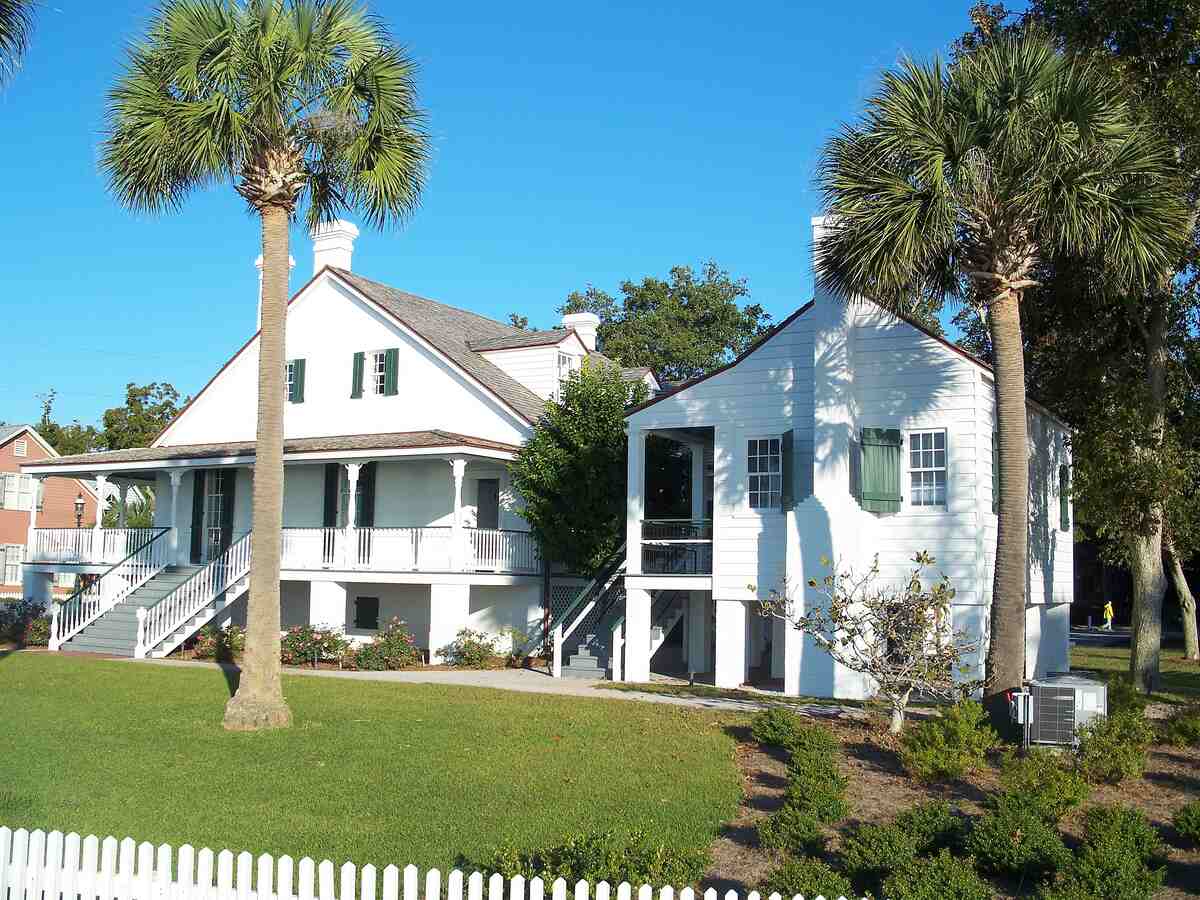
Are you ready to transform your Pensacola lawn into a stunning outdoor oasis? It all starts with choosing the perfect grass type. But don’t worry, it’s less overwhelming than it may seem. With a few key considerations, you can select the best grass type for your Pensacola lawn’s specific needs and preferences.
From low-maintenance options to varieties that can handle heavy foot traffic, we’ll help you find the perfect grass type to create a beautiful lawn. So, let’s get started!
Short on time? Skip ahead to how to choose the best grass type for your Pensacola lawn for a helpful decision guide.
1. Centipedegrass
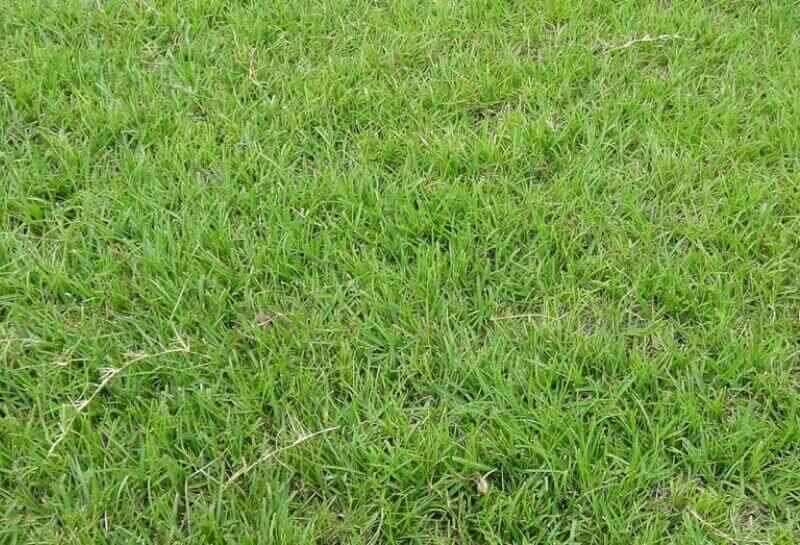
Photo credit: Michael Rivera / Wikimedia Commons / CC BY-SA 4.0
This turf is one of the most common grass types in the Florida Panhandle. Centipedegrass is lighter in color than other lawn grasses and has low fertilizer requirements. It thrives well in the soils and climate of Central and Northern Florida.
Centipedegrass is more sensitive to cold temperatures than many other warm-season grasses. It is prone to iron deficiency, which can lead the grass to turn light yellow.
- Classification: Warm-season grass
- Spreads by: Stolons
- Shade tolerance: Moderate
- Drought tolerance: Moderate
- Foot traffic tolerance: Low
- Maintenance needs: Does not respond well to the unnecessary use of fertilizer. Avoid overfertilizing with nitrogen, which will reduce the turf’s cold tolerance, lead to maintenance problems, and make it vulnerable to disease.
- Mowing height: Set the mowing height between 1.5 and 2.5 inches.
- Potential for disease: Good resistance to diseases and insects
- Soil pH: 5-6
- Soil type: Acidic, infertile, at least moderately good drainage (very dense, clay soils produce poor results)
Other notes: Centipedegrass is susceptible to pests such as nematodes and ground pearls.
Grass Seed Options:
– Gulf Kist Coated Centipedegrass Seeds (1 lb.)
– Scotts EZ Seed Patch and Repair Centipedegrass (3.75 lbs.)
– TifBlair Centipedegrass (5-lb. bag)
– Pennington Centipedegrass and Mulch (5-lb. bag)
2. Bermudagrass
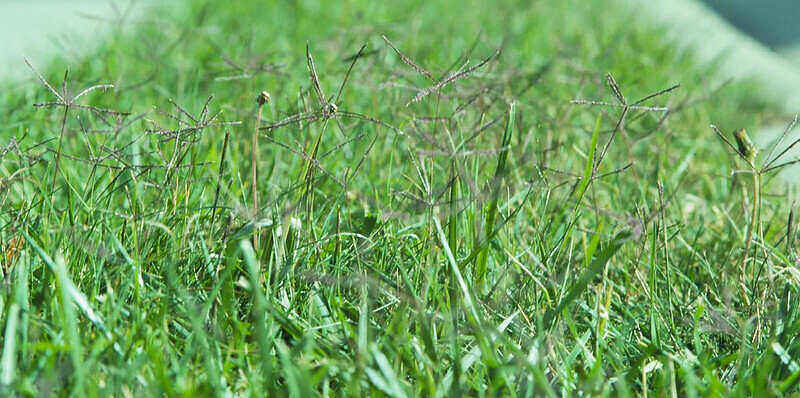
Photo Credit: Matt Levin / Flickr / CC BY-SA 2.0
This grass grows best in full sun and will thrive in Pensacola’s warm climate. Despite its low tolerance for cool temperatures, it does well against drought conditions. Bermudagrass creates a densely compacted ground cover and has a high salt tolerance.
In addition, Bermudagrass spreads rapidly through stolons and rhizomes (underground stems), which is good on one side but also means it will invade nearby flower beds. Because of its rapid growth, this grass builds up thatch that will need removing, so you’ll spend some time maintaining it.
- Classification: Warm-season grass
- Spreads by: Stolons and rhizomes
- Shade tolerance: Low; thrives in full sun
- Drought tolerance: High
- Foot traffic tolerance: High
- Maintenance needs: Needs frequent mowing due to fast growth rate; develops thatch easily; needs regular fertilization
- Mowing height: Set the mowing height between 0.5 and 1.5 inches for hybrid Bermudagrass cultivars. Mow common Bermudagrass down to 1 to 2 inches.
- Potential for disease: Good resistance to disease, although diseases are common; low resistance to insects
- Soil pH: 6-6.5
- Soil type: Tolerates most soil types
Other notes: Bermudagrass varieties can be divided into three categories: common, improved, and hybrid.
Grass Seed Options:
– Pennington Bermudagrass Bare Spot (5 lb. bag)
– Pennington Smart Seed Bermudagrass Mix (8.75-lb. bag)
– Scotts Turf Builder Bermudagrass (10-lb. bag)
– Hancock Seed Co. Bermudagrass (50-lb. bag)
3. Zoysiagrass
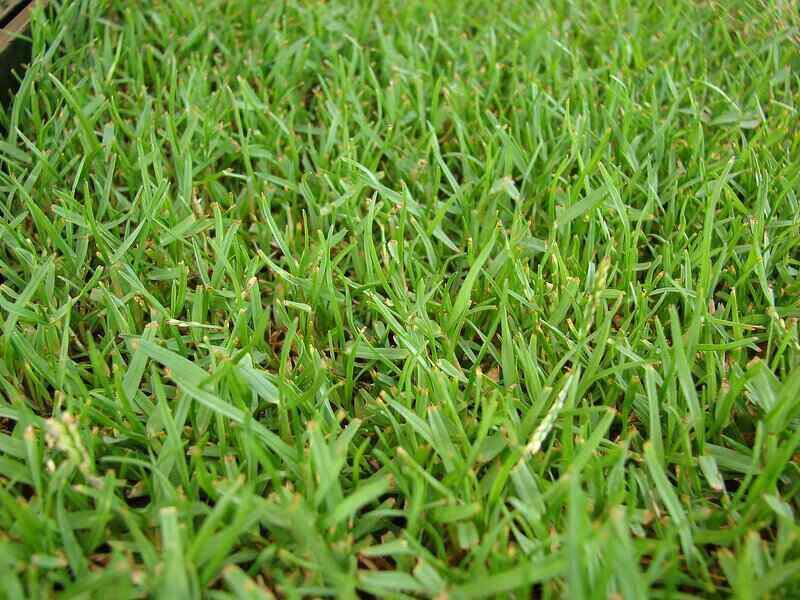
Photo Credit: Forest & Kim Starr / Wikimedia Commons / CC BY 3.0 US
Zoysiagrass is one of the five grass types recommended by the University of Florida for the best-looking lawns in the Sunshine State.
Zoysiagrass has a high salt tolerance and can be used in a variety of soil types. It varies in texture and works great in residential and commercial landscapes as well as athletic fields. This grass also has a higher tolerance for cooler temperatures than most warm-season grasses.
- Classification: Warm-season grass
- Spreads by: Stolons and rhizomes
- Shade tolerance: Moderate
- Drought tolerance: Moderate to High
- Foot traffic tolerance: High, but recovers slowly from damage
- Maintenance needs: Low nitrogen fertilization requirements, although, it’s prone to thatch build-up.
- Mowing height: Set mowing height between 2 and 2.5 inches.
- Potential for disease: Good disease tolerance overall.
- Soil pH: 6-6.5
- Soil type: Well-draining, some cultivars are more tolerant of a wide range of soils than others.
Other notes: Zoysia is vulnerable to harmful insects that feed on the grass’s roots.
Grass Plug and Seed Options:
– Zoysia Plugs (50 Large Grass Plugs)
– Zoysia Plugs (50 Full & Lush Grass Plugs)
– Zoysia Plugs (100 Plugs)
– Zoysia Emerald Grass Seeds (1/8 lb. of seeds)
– Zenith Zenith Grass Seeds (1/8 lb. of seeds)
4. Bahiagrass
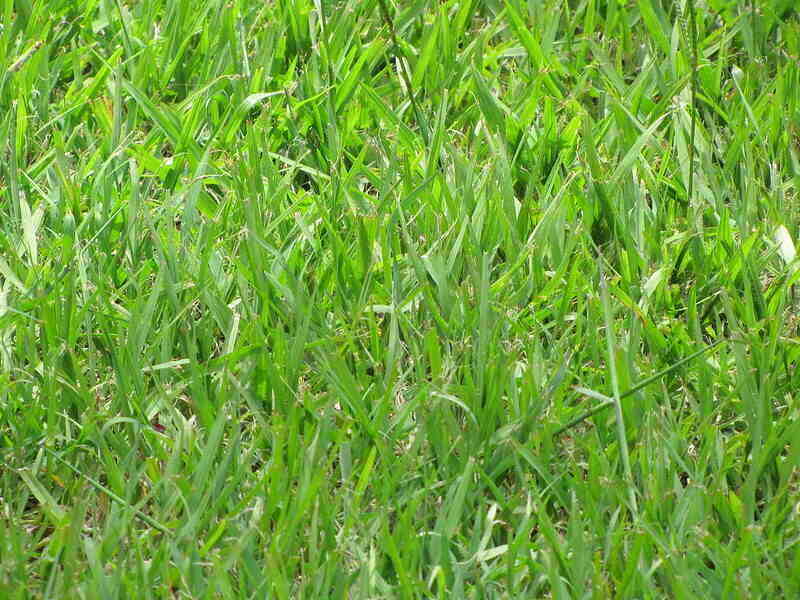
Photo Credit: Forest and Kim Starr / Flickr / CC BY 2.0
Bahiagrass is a great option for sandy soils, pastures, large lawns, or areas receiving little water. If you’re looking for a low-maintenance grass, bahiagrass is the way to go since it does well with limited fertilizer, forms low levels of thatch, and is adaptable to many soil types. It’s also pest and disease-resistant and thrives in Florida’s warm climate.
One of the best things about bahiagrass is that it can handle long periods without water. This grass is also less aggressive than other types, so it’s less likely to invade your flower bed.
- Classification: Warm-season grass
- Spreads by: Stolons
- Shade tolerance: Low, but more shade-tolerant than Bermudagrass
- Drought tolerance: Moderate
- Foot traffic tolerance: Low
- Maintenance needs: Low fertility requirements. Expect frequent mowing (every one to two weeks) to remove seed heads.
- Mowing height: Ideal grass height is 3 to 4 inches.
- Potential for disease: Good resistance to disease and insect infestations
- Soil pH: 5.5 to 6.5
- Soil type: Performs well in sandy loam soils, but tolerates a wide range of soils, including soils with low fertility.
- Varieties: Pensacola, Argentine, TifQuik, Tifton 9, UF Riata
Other notes: Although this turf is not vulnerable to pests, it is susceptible to mole crickets. These insects will burrow through the soil causing root damage that leads to rapid wilting.
Grass Seed Options
Pensacola Bahiagrass:
– Scotts Turf Builder Pensacola Bahiagrass (5 lb. bag)
– Hancock Seed Co. Pensacola Bahiagrass Seed (5 lb. bag)
– SeedRanch Pensacola Bahiagrass Seed (10 lb. bag)
Argentine Bahiagrass:
– Scotts Turf Builder Argentine Bahiagrass (10 lb. bag)
– Hancock Seed Co. Argentine Bahiagrass Seed Mix (25 lb. bag)
5. St. Augustinegrass
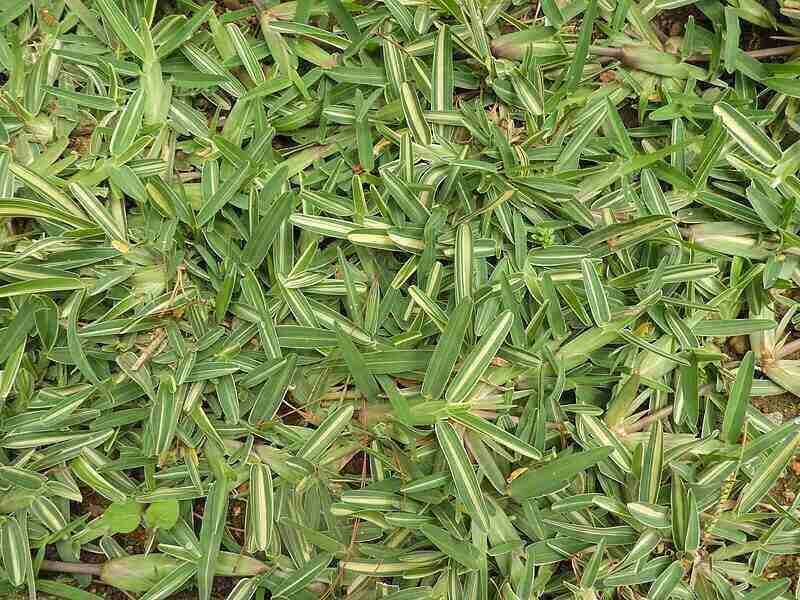
Photo Credit: Yercaud-elango / Wikimedia Commons / CC BY-SA 4.0
St. Augustinegrass originated from the coastal regions of both the Gulf of Mexico and the Mediterranean Sea. This turf is a popular lawn choice for many homeowners in the Deep South.
St. Augustine has a good tolerance for salt and shade. However, it does need a lot of water to remain healthy and will need extra irrigation during periods of drought. In addition, with its coarse, wide leaves and stems, the grass grows less dense than some other species.
- Classification: Warm-season grass
- Spreads by: Stolons
- Shade tolerance: Moderate. It is the most shade-tolerant warm-season grass.
- Drought tolerance: Moderate to High
- Foot traffic tolerance: Low
- Maintenance needs: Needs frequent mowing due to fast growth rate; develops thatch easily; needs regular fertilization.
- Mowing height: Set the mowing height between 3.5 and 4 inches.
- Potential for disease: Moderate to high
- Soil pH: 6-7.5
- Soil type: Tolerates many soil types; prefers moderately fertile and moist (not waterlogged) soils; doesn’t tolerate soil compaction.
Other notes: A major insect threat is the southern chinch bug. The pest causes wilting and brownish patches to appear in the grass.
Grass Plug Options:
– Seed Ranch St Augustine Seville Grass Plugs (2 Trays)
– Seed Ranch St Augustine Floratam Grass Plugs (2 Trays)
How to Choose the Best Grass Type for Your Pensacola Lawn
Choosing one of the best grass types for your Pensacola lawn doesn’t have to be a difficult task. First, consider how much time and energy you can spend on maintaining your lawn, then take into account the amount of foot traffic and shade your lawn will experience.
Will your lawn be a place for group activities like volleyball games and badminton, or will it be for relaxing at home with the family?
Low-Maintenance
Centipedegrass is a great option for those seeking a low-maintenance grass type for their Pensacola lawn. With a slow growth rate and low fertilizer needs, this grass type requires minimal upkeep.
Zoysiagrass is also relatively low-maintenance but will need occasional dethatching to maintain its health and appearance.
Shade Tolerance
When it comes to shade tolerance, St. Augustinegrass takes the crown as the most shade-tolerant grass type for Pensacola lawns. It can tolerate as low as three hours of direct sunlight and is known for its lush, green appearance.
Other grass types like Zoysia and centipedegrass can also tolerate some shade, making them great options for yards that have a mix of sun and shade.
Wear Tolerance
If you have pets and kids who love to play outside, you’ll want a grass type that can handle heavy foot traffic. Bermudagrass is the go-to grass for high-traffic areas, as it can withstand a lot of wear and tear without becoming damaged.
Zoysia is also known for its ability to handle high foot traffic, but it may recover more slowly if it does get damaged.
Bring In the Pros
With its beautiful beaches and mild winters, life in Pensacola can be wonderful and relaxing. Stressing over which grass type is right for your lawn and how you’ll care for it are not the best ways to take it easy on evenings and weekends. Unless, of course, yard work is your relaxation therapy.
Need help preparing your lawn? Visit our Pensacola lawn care page to get in touch with a professional.
LawnStarter participates in the Amazon Services LLC Associates Program, an affiliate advertising program. LawnStarter earns revenue from products promoted in this article.
Main image credit: Ebyabe / Wikimedia Commons / CC BY-SA 3.0